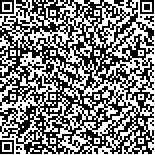| This article has been:Browse 579Times Download 2287Times |

scan it! |
|
|
| DOI:10.13522/j.cnki.ggps.2023563 |
|
| Evaluation and Obstacle Analysis of Agricultural Land and Water Resources Carrying Capacity in Coastal Areas |
|
LI Li, YU Guanghu, GUAN Wei, LI Daoyuan, SUN Xiaoqin
|
|
1. Jiangsu Agricultural Reclamation Land Resources Development Co., Ltd, Nanjing 211000, China; 2. Jiangsu Linhai Farm Co., Ltd., Yancheng 224000, China; 3. College of Agricultural Science and Engineering, Hohai University, Nanjing 211100, China
|
| Abstract: |
| 【Background】Water and land resources are crucial factors in maintaining sustainable agriculture. In response to the increasingly severe issues of quality and quantity of water and land resources in coastal areas, a deeper understanding of the carrying capacity of water and soil resources in these regions, as well as an assessment of the obstacles affecting this capacity, plays a significant role in guiding the optimal allocation of these resources. 【Objective】This study focuses on four counties and cities in the coastal area of Nantong, constructing an evaluation index system for agricultural water and soil resource carrying capacity. 【Method】Variability screening evaluation indicators were used, and the entropy-weighted TOPSIS model was employed to assess the agricultural water and soil resource carrying capacity in the coastal area of Nantong. Additionally, the main obstacles to agricultural water and soil resource carrying capacity were analyzed using an obstacle degree model. 【Result】The agricultural water and land resource carrying capacity in various coastal areas of Nantong was relatively good. The comprehensive indices for Nantong City, Rudong County, Haian County, and Haimen City fell within the range of 0.45 to 0.60, indicating a reasonable level of resource development and utilization, with some development potential remaining. However, Qidong City's comprehensive index fell within the range of 0.30 to 0.45, suggesting a balanced state of agricultural water and soil resource carrying capacity and limited further development potential.The impact of various subsystems on the agricultural water and land resource carrying capacity in the coastal area of Nantong varied significantly. Agricultural water and land resources had a substantial influence on the carrying capacity of agricultural water and soil resources in the coastal area of Nantong, accounting for 33.30% to 56.62% of the overall impact. The efficiency of farmland irrigation water resources was a key factor restricting the improvement of agricultural water and soil resource carrying capacity in Haian County, Rudong County, and Nantong City. Land productivity was a key factor in enhancing the carrying capacity of agricultural water and soil resources in Haimen City and Qidong City. 【Conclusion】This study can provide technical support for guiding the efficient utilization of soil and water resources in coastal areas of Jiangsu and even the whole country. |
| Key words: coastal area; land and water resources carrying capacity; obstacle factors; TOPSIS |
|
|